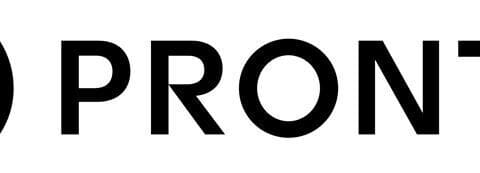Last Updated on May 6, 2024 8:48 am by Laszlo Szabo / NowadAIs | Published on May 6, 2024 by Laszlo Szabo / NowadAIs
What You Are Unable to Do: Robot Balances on a Ball with Nvidia’s DrEureka Sim-to-Real Model – Key Notes
- Nvidia’s DrEureka Introduction: An innovative system from Nvidia that uses large language models to streamline the sim-to-real design process in robotics.
- Automation of Reward Functions: DrEureka automates the creation of reward functions and domain randomization parameters for seamless real-world application.
- Experimentation and Validation: Successfully applied in complex robotic tasks like quadruped locomotion and dexterous manipulation, demonstrating robust performance.
- Enhanced Safety Features: Incorporates safety instructions into the reward design, enhancing the real-world safety and effectiveness of robotic operations.
- Future Improvements and Potential: Acknowledges the need for incorporating real-world feedback and additional sensory inputs to refine the simulation-to-reality transfer.
Introduction – Nvidia’s DrEureka Sim-to-Real Model
In the rapidly evolving world of robotics, the challenge of bridging the gap between simulation and real-world performance has long been a significant hurdle. Traditional approaches to sim-to-real transfer often relied on meticulous manual tuning of reward functions and simulation parameters, a process that was both time-consuming and labor-intensive. However, a new solution has emerged from the research labs of Nvidia, known as DrEureka.
DrEureka is an innovative system that leverages the power of large language models (LLMs) to automate and accelerate the sim-to-real design process. By harnessing the innate understanding of physical concepts within advanced LLMs, DrEureka is able to generate tailored reward functions and domain randomization parameters, enabling seamless transfer of policies learned in simulation to the real world.
Now we meet into the inner workings of DrEureka, exploring its key components, the experiments that have validated its capabilities, and the profound implications it holds for the future of autonomous robotics.
Bridging the Sim-to-Real Gap: The Challenge
Traditionally, the process of transferring policies learned in simulation to the real world has been a complex and arduous task. Robotic systems trained exclusively in virtual environments often struggle to maintain their performance when deployed in the physical world, a phenomenon known as the sim-to-real gap.
This gap arises due to the inherent differences between the simulated and real-world environments. Simulation environments, while highly optimized for efficient training, may not accurately capture the nuances and complexities of the physical world. Factors such as friction, damping, stiffness, and gravity can be challenging to model with perfect precision, leading to discrepancies between the simulated and actual robot behaviors.
To overcome the sim-to-real gap, researchers have traditionally relied on manual design and tuning of the task reward function, as well as the simulation physics parameters. This process requires a deep understanding of robotics, physics, and the specific task at hand, making it a time-consuming and labor-intensive endeavor. As a result, the development of robust and reliable robotic systems has been hindered, limiting the widespread adoption of autonomous technologies.
Nvidia’s Eureka: The Precursor to DrEureka
Before the advent of DrEureka, Nvidia had already made significant strides in addressing the sim-to-real challenge with the introduction of their Eureka platform. Eureka is a human-level reward design algorithm that automates the process of crafting reward functions for robotic tasks.
The Eureka platform takes the task and safety instructions, along with the environment source code, and generates a standardized reward function and policy. These are then tested across various simulation conditions to develop a physics prior that is sensitive to rewards. This reward-aware physics prior serves as a crucial foundation for the subsequent steps in the DrEureka workflow.
Eureka’s ability to generate tailored reward functions marked a significant advancement in the field of sim-to-real transfer, as it eliminated the need for manual, time-consuming reward function design. However, the Eureka platform still relied on human-designed domain randomization (DR) parameters to bridge the gap between simulation and reality.
Enter DrEureka: Harnessing the Power of Language Models

The key innovation behind DrEureka lies in its ability to harness the extensive physical knowledge embedded within state-of-the-art LLMs. These advanced language models, such as GPT-4, come equipped with a deep understanding of concepts like friction, damping, stiffness, gravity, and other fundamental physical principles. By tapping into this innate knowledge, DrEureka is able to generate highly effective domain randomization parameters that bridge the gap between simulation and reality.
The DrEureka workflow begins by taking the task and safety instructions, along with the environment source code, and initiating the Eureka reward generation process. Eureka produces a standardized reward function and policy, which are then tested across various simulation conditions to develop a reward-aware physics prior.
Next, the LLM-powered DrEureka component leverages this physics prior to generate a set of domain randomization parameters that are tailored to the specific task and environment. By synthesizing the Eureka-generated reward function and the LLM-crafted domain randomization parameters, DrEureka is able to train policies that are optimized for real-world deployment.
Experimental Validation: Quadruped Locomotion and Dexterous Manipulation
To validate the capabilities of DrEureka, the research team conducted a series of experiments across various robotic tasks, showcasing the system’s ability to bridge the sim-to-real gap.
Quadruped Locomotion
One of the key tasks explored was quadruped locomotion, where the researchers trained a robot dog to navigate through different real-world terrains. The DrEureka-generated policies demonstrated remarkable robustness, outperforming those trained using manually designed reward and domain randomization configurations.
Interestingly, the researchers found that the LLM-powered DrEureka was able to not only match the performance of human-designed policies but also solve novel tasks, such as quadruped balancing and walking atop a yoga ball, without the need for iterative manual design.
Dexterous Manipulation
In addition to quadruped locomotion, the researchers also evaluated DrEureka’s capabilities in the realm of dexterous manipulation. The system was tasked with training a robot to perform complex cube-rotation maneuvers, a challenge that typically requires meticulous simulation tuning.
Once again, the DrEureka-generated policies showcased their adaptability, seamlessly transferring the learned skills from the simulated environment to the physical world. The researchers were impressed by the system’s ability to handle real-world disturbances and uncertainties, maintaining consistent performance across various test conditions.
Enhancing Safety and Robustness: The Role of LLM-Driven Reward Design
A critical aspect of the DrEureka system is its ability to incorporate safety considerations into the reward design process. By enhancing the Eureka reward generation subroutine with safety instructions, the researchers ensured that the resulting reward functions were tailored not only for task performance but also for safe real-world deployment.
This safety-conscious approach is particularly crucial when dealing with complex robotic systems that operate in unstructured environments. The LLM-driven reward design within DrEureka enables the generation of policies that prioritize both task completion and the preservation of the robot’s integrity, as well as the safety of its surroundings.
Pushing the Boundaries: Future Directions and Limitations
While the current implementation of DrEureka has demonstrated impressive capabilities, the researchers acknowledge that there are still avenues for further improvement and exploration.
One potential enhancement is the integration of real-world execution feedback into the LLM training loop. By using data from real-world deployment failures as additional input, the LLMs could potentially fine-tune the sim-to-real transfer process even more effectively in successive iterations.
Additionally, the researchers note that all the tasks and policies in the study relied solely on the robot’s proprioceptive inputs, without incorporating vision or other sensor modalities. Integrating these additional sensory inputs could further enhance policy performance and enrich the LLM’s feedback loop, leading to even more robust and adaptable robotic systems.
As with any new technology, DrEureka also faces certain limitations. The researchers acknowledge that there are still occasions when the robot falls from the yoga ball or encounters other real-world challenges.
Conclusion
Nvidia’s DrEureka represents a groundbreaking advancement in the field of sim-to-real transfer for autonomous robotics. By harnessing the power of large language models, the researchers have developed a comprehensive system that automates the entire process, from initial skill acquisition to real-world implementation. You can read their full research paper here.
The experimental results showcased the remarkable robustness and adaptability of DrEureka-generated policies, outperforming those trained using traditional, manual approaches. The system’s ability to not only match the performance of human-designed policies but also solve novel tasks without iterative design is a testament to the transformative potential of this technology.
As the capabilities of language models continue to evolve, the future of autonomous robotics holds immense promise. DrEureka’s seamless integration of physical understanding, task-specific reward design, and adaptive domain randomization paves the way for a new era of intelligent, adaptable, and responsive robotic systems.
The implications of this technology extend far beyond the confines of research laboratories, as industries across various sectors stand to benefit from the advancements in sim-to-real transfer. From manufacturing and logistics to healthcare and disaster response, the versatility of DrEureka-powered robots could unlock new frontiers of automation and transform the way we interact with the physical world.
Definitions
- Nvidia: A technology company known for its powerful GPUs and pioneering work in artificial intelligence and deep learning technologies.
- DrEureka: A system developed by Nvidia that uses AI to help bridge the sim-to-real gap in robotics, enhancing the translation of simulated robotics tasks to real-world applications.
- Sim-to-real gap: The disparity between how robots perform tasks in simulated environments versus real-world settings.
- Domain Randomization (DR) parameters: Variables and settings adjusted in simulation environments to help models generalize better when moved to real-world tasks, aiding in overcoming the sim-to-real gap.
Frequently Asked Questions
- What is Nvidia’s DrEureka and its primary function? Nvidia’s DrEureka is a cutting-edge tool that utilizes large language models to automate the creation of reward functions and simulation parameters, facilitating smoother transitions from simulation to real-world robotic tasks.
- How does Nvidia’s DrEureka enhance robotic simulations? By generating tailored reward functions and domain randomization parameters, DrEureka enables robots to adapt more effectively to real-world conditions, thereby improving the accuracy and efficiency of simulations used in robotic training.
- What unique capabilities does Nvidia’s DrEureka offer in robotics? DrEureka stands out by allowing for automated, intelligent adjustments in simulation training, which leads to more effective real-world applications. This reduces the time and complexity typically involved in manual tuning of simulation environments.
- Can Nvidia’s DrEureka be integrated into existing robotic systems? Yes, DrEureka is designed to integrate with various robotic platforms, enhancing their ability to transition from simulated training to practical, real-world applications without the need for extensive reconfiguration.
- What future developments are expected for Nvidia’s DrEureka? Future enhancements for DrEureka may include integrating additional sensory inputs and real-world execution feedback into its training loop, which will further refine its capability to transition simulations to real-world applications effectively.










